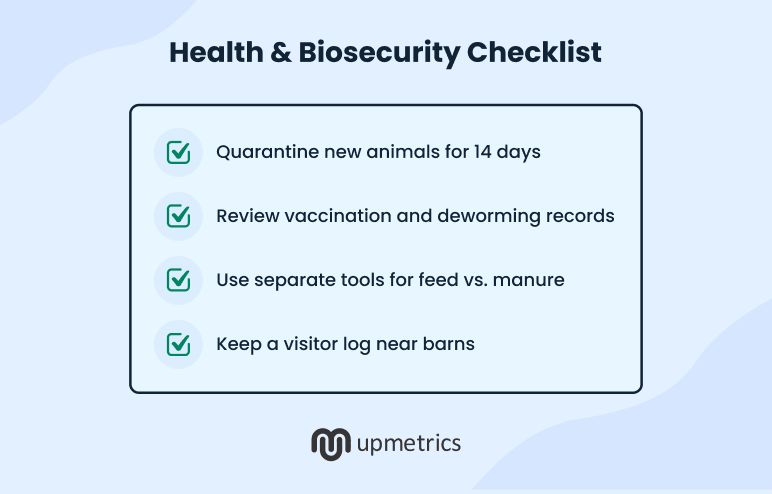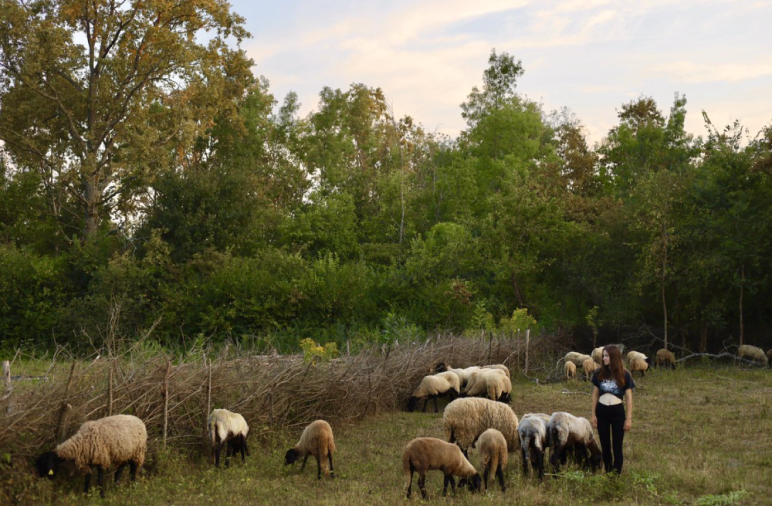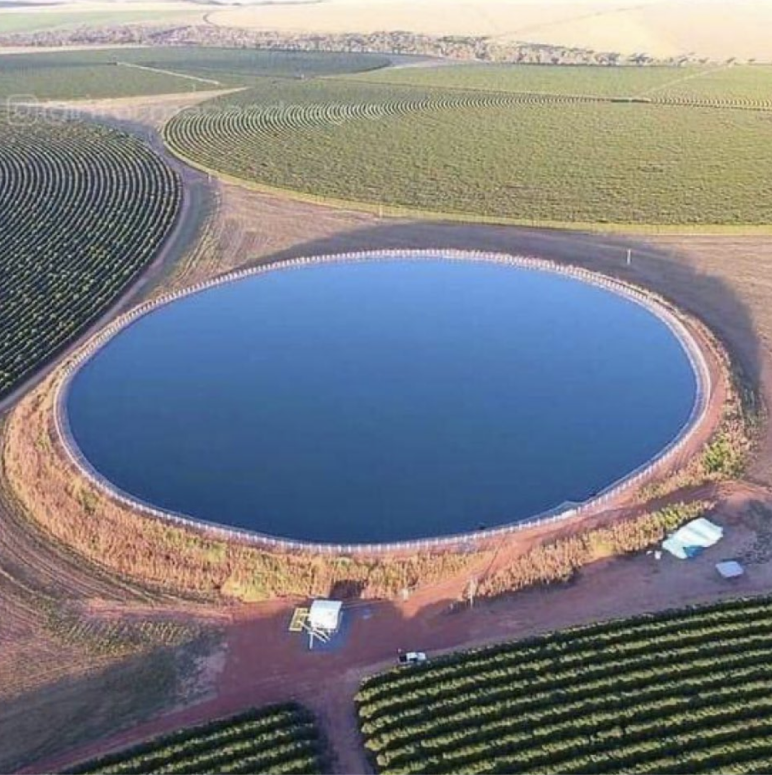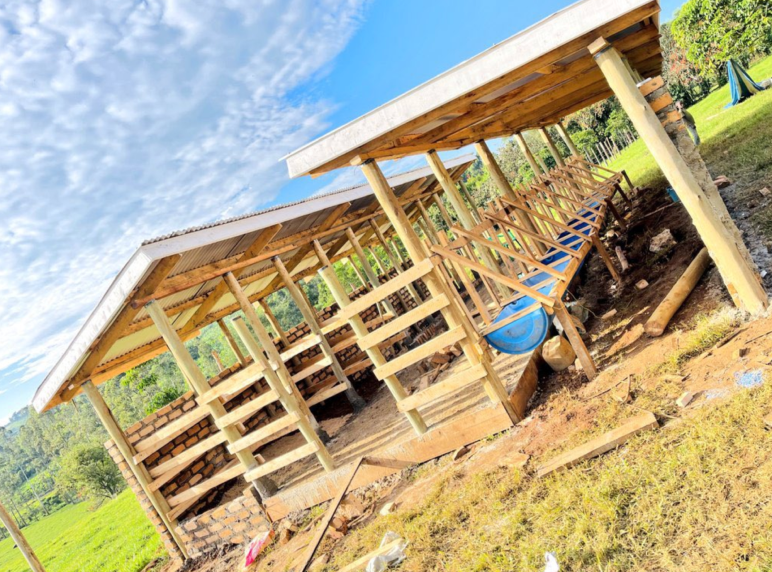Cattle farming is no longer just for traditional farmers.
Whether you’re a landowner looking to make better use of your property or someone ready to turn farming into a structured business, starting a cattle farm can be a strong opportunity.
However, this is the kind of business where success (more than hard work) depends on planning:
- Choosing profitable breeds,
- Budgeting for feed and equipment, and
- Building a reliable sales network
As a consultant, I’ve worked closely with a few cattle farm owners, helping them set up their operations. And, I know exactly what it’s like to manage a cattle production unit.
In this guide, I’ll help you establish and expand a profitable and sustainable cattle operation—from selecting high-yield breeds and setting up efficient housing and feeding systems to managing herd health and maintaining consistent market returns.
Let’s start by breaking down the initial costs before we move to the steps:
Key Takeaways
- Starting a cattle farm usually costs between $80,000 and $150,000. Before you begin, make sure your land has enough grass, water, and space to keep your herd healthy year-round.
- A solid plan that covers your cattle care, finances, and sales channels will help you avoid expensive mistakes and grow your farm at a steady pace.
How much does it cost to start a cattle farm business?
The cost of starting a cattle farm business is approximately $80,000–$150,000.
That number can obviously swing depending on where you’re located, how much land you already own, and how big you want to start. If you have pasture land and a few basic facilities, your costs will be low. But if you’re starting from zero, which means buying land, fencing it, setting up water, barns, and your first herd, it’ll take a bigger investment.
I’ve created a simple breakdown to show where that money usually goes in the first year.
| Expense Category | Estimated Cost Range (USD) |
|---|---|
| Land Purchase or Lease | 20,000–100,000 |
| Cattle Purchase | 15,000–40,000 |
| Fencing and Corrals | 10,000–25,000 |
| Shelter and Barn Setup | 8,000–20,000 |
| Feed and Nutrition | 5,000–15,000 |
| Water Supply and Irrigation | 2,000–5,000 |
| Veterinary Care and Breeding | 2,000–6,000 |
| Machinery and Equipment | 5,000–15,000 |
| Licenses, Permits & Insurance | 1,000–3,000 |
| Labor and Management | 5,000–10,000 |
| Miscellaneous & Contingency | 3,000–5,000 |
How to start a cattle farm business in 2025 (11 steps)
These steps won’t just inform you how to buy cattle or land, but will help you build a system that lasts. From planning to profit, helping you avoid common mistakes and make smart choices from day one. Each step keeps you focused, saves you from unnecessary costs, and ensures your farm grows the right way.
Let’s dive in.

Step 1: Decide your farming type and goal
Here’s something I’ve learned working with new farmers: most people jump in before they’ve decided what they actually want their farm to be. They have land, maybe even cattle, but no clear goal tying it together. That’s where things start slipping.
So before buying anything, get honest with yourself. What kind of operation fits you—your time, your budget, and your land? If you’re running this on the side, a small cow–calf setup might make sense. If you’ve got more acres and capital, you could finish cattle and sell directly to butchers or restaurants.
Ask yourself:
- Do I have enough pasture, water, and cash to get started?
- Can I get feed and vet help easily?
- Who will buy my beef—neighbors, local markets, or wholesale buyers?
Once you’ve pinned that down, write it down and build your business strategy. Maybe you want to raise calves to sell, or maybe you’d rather grow them to slaughter weight and brand your own beef.
Either way, defining that goal early saves you from wasted time and money later. When you know where you’re headed, every choice—from breed to fencing—starts to make sense.
Step 2: Conduct feasibility and land assessment
Ensure the site is suitable for cows before bringing any. In my opinion, good land is the foundation of a good farm. Start by walking on the ground to determine the viability.
Feel the soil. It should be rich, black, and capable of retaining moisture. You know it gets expensive for feed if the soil is sandy and dry. Additionally, look for a trustworthy water source because cows can easily down 20 to 40 liters of water daily.
Next, examine the grass type growing there. Strong pastures mean healthy cattle. Poor grass means more work and higher costs. Watch how sunlight hits the field. Direct sunlight is essential for grass as well as for cows.
Cows need both shade and open space. Also, think about wind direction and shelter options for the colder months.
That said, let’s talk about how much land you need. Here’s a quick guide:
| Operation Type | Acres per Cow (Recommended) | Notes |
|---|---|---|
| Small-Scale Beef Farm | 1.5–2 acres | Ideal for beginners; allows room for grazing and rotation. |
| Grass-Fed Beef Operation | 2–3 acres | Requires more land to maintain natural forage year-round. |
| Feedlot or Semi-Intensive Beef Farm | 1–1.5 acres | Needs proper feed management and waste control. |
| Breeding and Cow-Calf Operation | 2–3 acres | Extra space ensures healthy calving and reduces pasture stress. |
Always plan for 20% extra land than you think you need. Droughts, poor grass seasons, and herd growth can occur at any time.
Before you make any decisions, definitely test the soil. See if it can support your farm. Most local agricultural offices can guide you on how to do this. The smartest thing to do? Walk the land on both dry and rainy days. See how it handles water, drainage, and growth.
Step 3: Register your cattle business and obtain permits
Registration of your cattle farming business is a process that makes your future operation smooth.
Whether it’s opening bank accounts, applying for loans, or getting insurance, having registration ensures you can do all without legal hurdles.
Here’s a quick overview of the main things you’ll need:
- Business registration
- Licenses and permits
- Livestock identification
The process to get this done is as follows:
| Section | What You Need | How to Do It | Estimated Cost (USD) |
|---|---|---|---|
| Business Registration | Legal structure (LLC, sole proprietorship, etc.) and business name | Visit your State Secretary of State portal. File your LLC or business name online. SBA state guide | 50–150 |
| Farm/Agricultural Permits | State livestock or farm operation license, zoning clearance | Check your State Department of Agriculture website. Apply online or download forms. Confirm local county zoning rules. | 50–200 (varies by state) |
| Tax Identification | Employer Identification Number (EIN) | Apply online through the IRS EIN portal. Takes ~10 minutes. | Free |
| Livestock Identification | Premises ID, ear tags, or brand registration | Register your herd with your State Animal Health Board. Tags/brand help track cattle for disease control and legal sales. | 10–100, depending on tags or brand fees |
Step 4: Choose the right cattle breed
Your choice of breed should match your land, climate, and overall goal. Because the wrong one can drain your pocket and delay your progress.
Think about your business model. Do you plan to raise cattle for fast-growing beef production or focus on quality meat for premium markets?
Then, look at your land and climate. Some breeds don’t mind the heat and dry conditions. Others love cooler regions. Select cattle that can thrive and remain healthy and productive in your area without requiring constant care or expensive feed.
Also, think about your resources. Have limited feed or smaller pastures? Go for hardy, low-maintenance breeds. Got some money to spend? Invest in better feed and facilities, choose higher-yield breeds that bring more profit per head.
In short, know your land, know your limits, and pick a breed that fits both.
However, before buying
- Check their health and history (Temperament matters: stressed or aggressive cows drain time and energy)
- Ask for vaccination records
- Ask about diseases in their herd

Step 5: Set up cattle farm infrastructure
So, once you’ve chosen your breed(s), ensure your farm is ready for them. A well-built infrastructure keeps your cows safe, helps them grow healthy, and makes daily farm work easier.
But how will you set up your farm infrastructure?
First, start with fencing
You need to put up sturdy fences that can hold cattle in but also let them move easily between pastures. Virtual fencing with GPS collars can replace wire in some layouts and cut labor by alerting cattle at set boundaries.
Draw an invisible boundary on a map, and when the cow goes closer to the boundary, the collar gives a warning sound. This helps you save a significant amount of money and effort.
Further, if you want to avoid high expenses on fencing material, build dead hedges like this 👇

Next is water
Each cow drinks about 20–40 liters of water a day, depending on the weather. So, ensure clean water is always within their reach.
Use groundwater for a steady supply, install an irrigation system to keep your fields green, and build a small reservoir so your cattle never go thirsty.

The reservoir can store water, help irrigate your crops, support small-scale fish farming for extra income, and keep your farm running smoothly even in dry months.
Then shelter
Give your cows shade in the summer and a warm spot in the winter. Build a simple three-sided shed near where they usually eat or drink.
Use whatever’s handy—wood, steel, or bamboo—as long as it keeps out wind, rain, and harsh sun. What matters most is comfort, not fancy materials.

Lastly, design your farm
Prepare your farm entry and exit in a way that allows cows, yourself, and any visitors to move smoothly without stress or confusion. Narrow or awkward paths will frustrate the cows and slow you down.
Here’s how you can design your farm:
- Keep doors wide enough for cows to pass comfortably
- Position water troughs along natural cow paths or near feeding spots
- Hay, silage, or concentrates should be easy to move but stored safely from rain and pests
- Design straight or gently curving paths for moving cows, and avoid sharp corners
- Leave open areas near barns and shelters so cows can gather without crowding
Step 6: Create a business plan
Do you really need one for a cattle farm?” Absolutely. Not because it’s a formality—but because it saves you from costly mistakes later.
In cattle farming, your expenses don’t wait. Feed prices fluctuate, land maintenance costs pile up, and buyers often pay on delay.
A cattle farm business plan helps you map cash flow, plan for seasonal ups and downs, and prove to lenders or investors that your farm can sustain itself.
Most importantly, it forces you to think through the practical side:
- How many cattle can your land support?
- When do you break even?
- What to do if feed or vet costs rise unexpectedly?
Your plan doesn’t need to be complex; it just needs to be clear. Include:
- Your goal, as if you want to sell calves, finish cattle for market, or build a branded beef line
- Set up costs and revenue sources
- Land and resource plan
- Feeding and breeding strategy
- Sales and marketing plan
- Financial forecast (income vs. expenses)
Remember, you can always update it as your farm grows. The best business plans aren’t the fanciest; they’re the ones you actually follow.
Not sure about your cattle farm business plan?
Let Upmetrics help you make it simple using AI
Plans starting from $14/month

Step 7: Establish a herd management system
Success in cattle farming = Showing up every day with care and consistency. You need a system that helps you stay on top of things, not just hope it’ll all work out.
Start with your breeding records. Know which cows are pregnant, when they’re due, and which bull was involved. A notebook works fine, or if you prefer less guesswork, try a simple herd app to track dates and notes.
Watch their feed, too. Some cows eat like they’re training for a marathon. Others just nibble. Note what each one eats and adjust as you learn. It’ll save you money and keep your herd healthy.
Lastly, check on their health. Mark down vaccinations, deworming, and vet visits. If one falls sick, these notes will help your vet sort things faster.
Feed example: A 1,200 lb cow in mid-lactation eats roughly 2.5–3% of body weight in dry matter daily. Adjust rations with forage tests to save feed costs.
And here’s the truth—consistency wins. Check your herd every single day. Notice who’s quiet, who’s eating less, or who looks off. Small problems grow fast if you ignore them.
Step 8: Build market relationships
Healthy cows are only half the story. If you want your farm to do well, you need people who buy your meat or calves, again and again.
I believe success doesn’t come from just raising cattle—it comes from building real connections.
Start by identifying who your customers could be. They can be:
- Local butchers
- Meat processors
- Livestock markets
Now, don’t make the mistake of assuming they’ll come to you. You have to go meet them. Introduce yourself and explain what you’re offering. Once you’ve made initial connections, market your cattle effectively:
- Join farmer associations, agricultural fairs, or cooperative meetings.
- Offer your products directly to butchers, restaurants, or consumers.
- Build a social media page and website for online presence
Next, learn the rules of the trade. Ask butchers, processors, or cooperatives about contract terms, seasonal price trends, and grading systems.
For example, butchers might pay more for certain quality meat, while processors care about a consistent supply. Knowing this helps you plan your production and set realistic expectations.
Maintain relationships through regular communication. Visit your buyers occasionally, give updates on your herd, or share if you have extra stock coming soon. People buy from those they trust and know personally.
Step 9: Hire or train skilled labor
Cattle don’t take care of themselves, and neither does the farm. That’s why having a helper or skilled labor lets you focus on what’s important.
Thus, start by looking for skilled hands who understand feeding routines, animal handling, and basic medical care. When hiring, focus on experience with cattle or livestock.
Ask for references from other farmers or previous employers. If possible, spend a day observing how they handle animals—calm, confident workers make a huge difference.
To find the right labor, check these places:
- Local farming communities or cooperatives
- Agricultural colleges or vocational training centers
- Online farm job boards or classifieds
- Recommendations from other farmers in your area
After hiring, train your team, even experienced farmhands, who need to learn your routines. Show them:
- How you feed and rotate pastures
- Handling techniques to keep cows calm
- Daily health monitoring and spotting early signs of illness
- Cleaning and maintaining water troughs, shelters, and equipment
Step 10: Track finances and performance
The cattle farming business is a long-term game, and in such ventures, things can go downhill before you even realize it. Hence, financial projection is essential here.
Here’s how to go about it:
Use spreadsheets
Consistently record every detail, like:
- Feed cost
- Labor cost
- Meat production
- Calving & mortality records
- Sales & income
Make a dedicated section or sheet for each record and make entries daily. Yes, it’s an overwhelming process, but there are many herd management apps you can use.
Review each section
Don’t just record your finances and leave them; make it a habit to review your records weekly or monthly to stay on top of your farm’s progress. Ensure by comparing actual numbers with your initial projections.
- Are cows gaining weight on schedule?
- Are feed costs reasonable?
- Are market prices holding steady or dropping?
- Is your herd’s health improving or showing signs of stress or disease?
Adjust based on data
If a particular feed isn’t working or a breed isn’t thriving, tweak your plan. Analyze your record data and make the required adjustments. These small adjustments save money and improve productivity.
Step 11: Scale responsibly
Remember, the cattle farming business is tempting to grow fast, but it rewards patience. Expand your herd only after your production, labor, and finances are stable. Here’s how you can scale gradually:
- Increase herd size slowly, add a few animals at a time
- Ensure your pastures, water, and shelters can handle the extra cows
- Keep monitoring feed-to-weight ratios, health, and labor efficiency
- Only invest in more land or infrastructure when your current setup is running smoothly
To make things clear, here’s a timeline to scale your cattle business:
| Year | Action | Notes/Focus |
|---|---|---|
| Year 1 | Start with a small herd | Focus on learning herd management. Don’t rush expansion. |
| Year 2 | Stabilize production & finances | Ensure meat output is consistent, costs are tracked, and labor routines are efficient. |
| Year 3 | Add 10–20% more cattle | Only if the feed, shelter, and water systems can handle it. |
| Year 4 | Evaluate the need for more land | If current pastures are fully utilized, consider leasing/purchasing additional land to support herd growth. |
| Year 5 | Gradual herd expansion | Expand the herd further based on profits and operational efficiency. |
Conclusion
With this blog, you’ve got the basics—a clear idea of costs, what to prepare, and how to get your farm running. The key advice I’d give? Start small, focus on learning, and adjust as you go; that’s how farms grow steadily.
If you want to organize your ideas and plan without feeling overwhelmed, putting them on paper helps. With tools like Upmetrics, you can map out your herd, track costs, and plan your farm in one place; it’s just a simple way to keep your ideas clear and actionable.
Take it step by step, trust the process, and good luck—your farm is ready to grow.
The Quickest Way to turn a Business Idea into a Business Plan
Fill-in-the-blanks, AI-assistance, and automatic financials make it easy.


